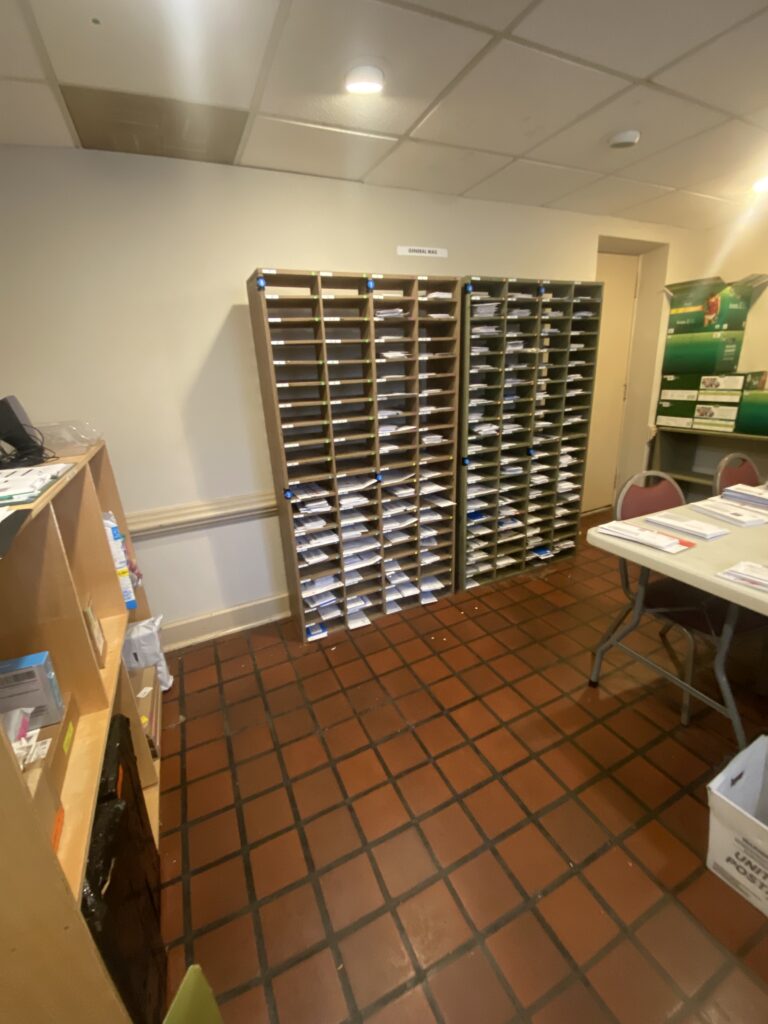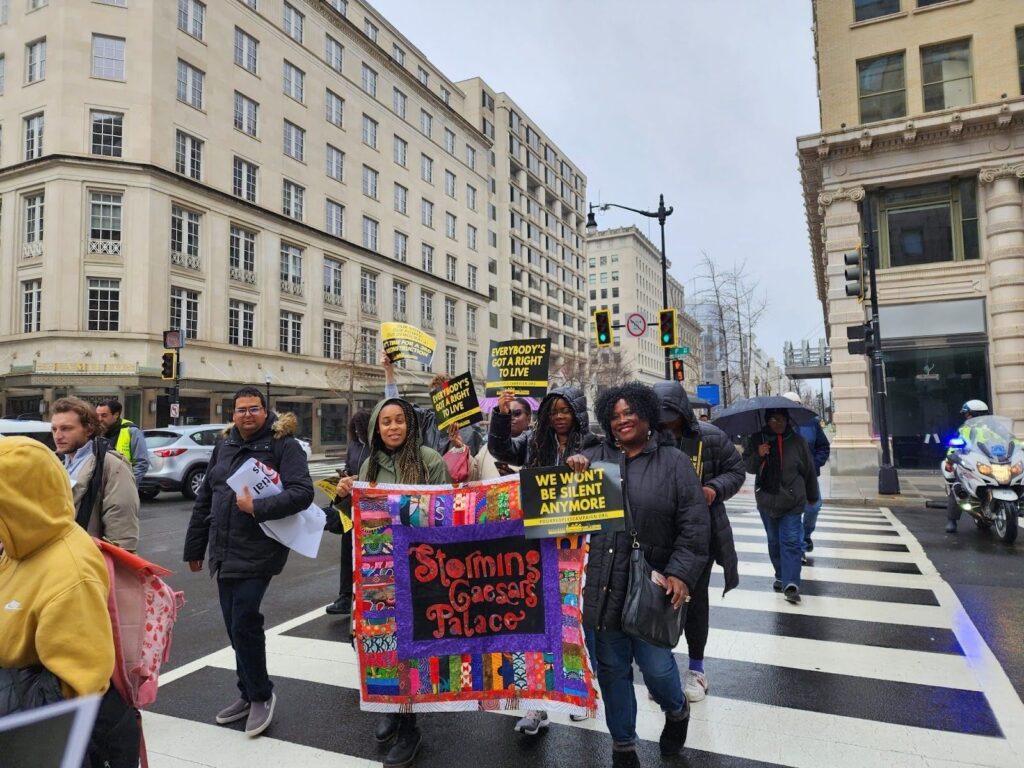In his first year experiencing homelessness, combat veteran Jeffrey Williams faced many obstacles, one of which concerned his medical care.
“I came to D.C. to get my benefits started,” he said, “and to get medical attention through [Veterans Affairs].” However, he could not receive this care without an ID. And to obtain an ID, he would need a physical address.
Similarly, Tyree, a relaxation therapist, mechanic and music producer had his wallet stolen while experiencing homelessness. “I didn’t have IDs and a social security card any more,” Tyree said.
Through word of mouth, Williams and Tyree heard about the mail service at So Others Might Eat (SOME). At their O St. NW location, this D.C. nonprofit runs a mailroom for people experiencing homelessness, enabling clients to receive packages, letters, paychecks, social security cards, birth certificates, stimulus checks, voting ballots and court documents.
“The mail service is a godsend for us that don’t have a physical address so we can have a place to go pick up our mail,” Williams said.
When the mail services program at SOME started about three years ago, “it was being run out of a closet file cabinet,” said Daniel Slick, SOME mail clerk and services coordinator. The need for unhoused people to have a physical mailing address became apparent during the COVID-19 pandemic as the government began mailing out aid.
“When I started, we, in the first month, just started signing people up for stimulus checks,” Slick said. As Slick watched people “break down crying and give hugs and be really thankful” when they received their stimulus checks, he realized the service was essential.
Over the past three years, Slick and his coworkers have expanded the program and now have a small room dedicated to mail services. In this room, they sort and alphabetize mail from the post office twice a week based on the type of mail: important documents, general mail and packages. Since all general mail is returned to the sender if it is not picked up within four weeks, they also have a holding section where they store mail for people in special circumstances, such as those incarcerated, for up to six months.
After sorting the mail, Slick and three other employees in the volunteer services team notify clients about their mail through text and email. Clients with no internet access can ask the mailroom workers in person if they have mail. To pick up their mail, clients are required to show ID or another document with their name on it.
“We have in our system right now 4,000 people who have received mail here before,” Emma Mitchell, a volunteer who recently finished a year of service at SOME, said. SOME’s mail services program is one of 10 in the United States. Project Service Connect in San Francisco is the only one in the country as big as SOME’s.
“I think the needs of people who are homeless are often overlooked beyond the immediate needs that really scream out to people like food and clothing,” Slick said. “It’s just a lack of fully comprehending the needs that people without homes have.”
SOME’s mailroom was built upon the organization’s whole-person care approach to helping people who are struggling. “Because we have holistic care, it allows us to treat people with more dignity and respect and tackle those hidden obstacles to overcoming homelessness and poverty,” Mitchell said.
So far, the SOME mailing program has been largely successful, according to Daryl Wright, senior vice president of community outreach. Approximately 1,600 people registered to vote for the first time in 2020, and 1,200 have received stimulus checks through the mail service.
However, there is still room for growth. Currently, people cannot send mail through the program and must go to a post office. “We hope to be eventually able to provide stamps to people who want to send things out,” Slick said.
SOME also hopes to lengthen their mail service hours, from five days a week to six. An additional day would provide more opportunity for people who are occupied during the week to pick up their mail.
The SOME mail program isn’t just about mail, but about helping people experiencing homelessness gain further autonomy and improve their lives. “Tools, like an address to get mail, can allow people to finally get out of that cycle of poverty and homelessness,” Mitchell said.
Editor’s note: We sometimes allow sources who have experienced homelessness to withhold their full names from our stories especially if there are concerns about retaliation. Tyree did not provide his full name for use in this story.








